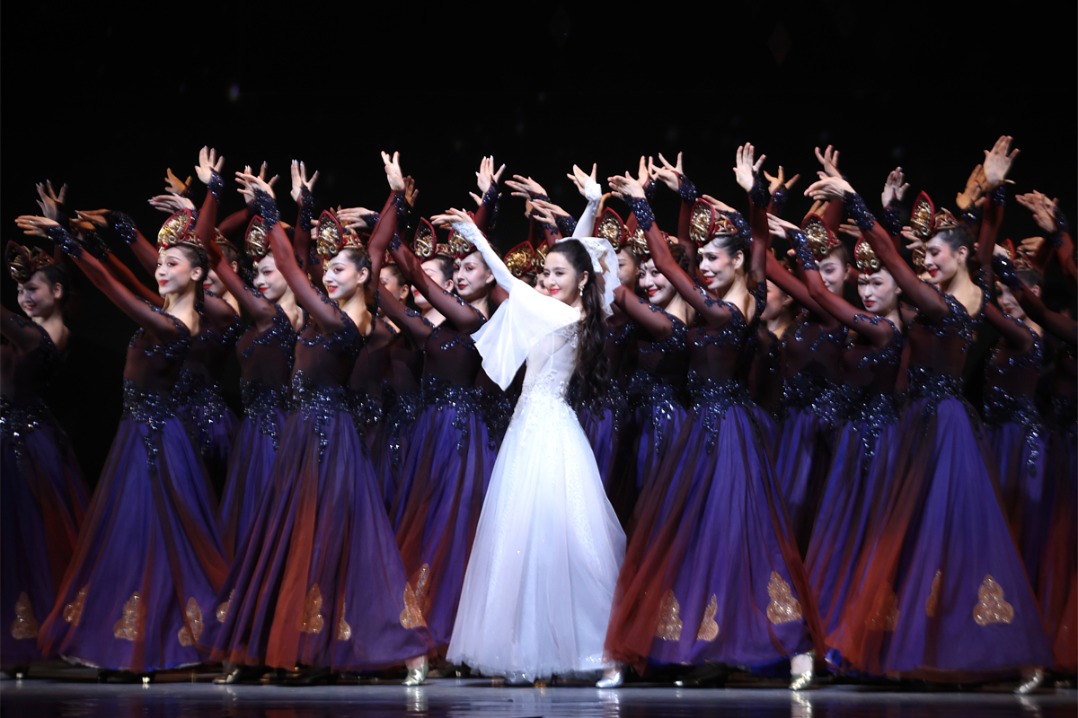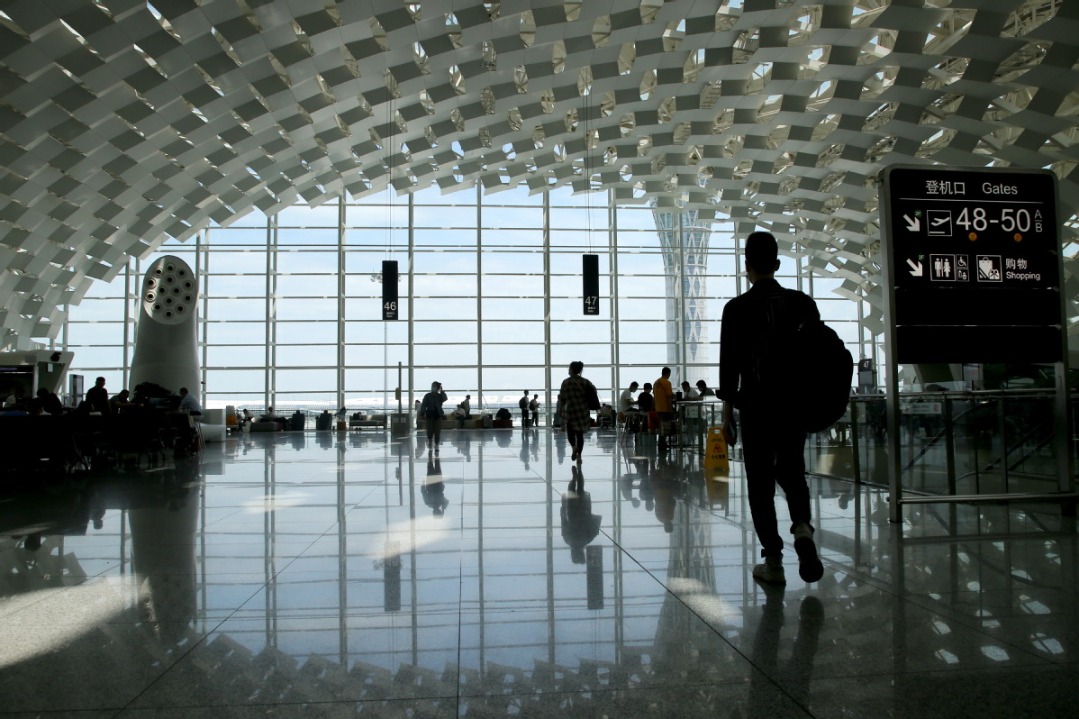Life in the halfway house of the tent emperors

When it comes to size, Shenyang Palace Museum is a mere fraction of its counterpart, known as the Forbidden City, in Beijing. But the two have blood ties: The palace in Shenyang was the abode of founders of the Qing Dynasty (1644-1911), China's last feudal rulers, before their successors conquered the entire country and moved farther inland to Beijing, and into its grand royal palace in 1644.
Between 1644 and 1911, successive Qing emperors took immense pride in living in the Forbidden City, built by rulers of the Ming Dynasty (1368-1644) empire, which they had destroyed. At the same time, they returned repeatedly to Shenyang, in present-day Liaoning province, and to its humble palace.
The Manchus are one of only two ethnic minority groups that have ruled China, and they - particularly their elite - were always acutely aware of how important it was to embrace the dominating culture of the Han majority.
On the other hand, it has been argued that the Yuan Dynasty (1271-1368), created by the other minority that ruled, the Mongols, fell disastrously partly because mentally and culturally their rulers never really walked out of their tents.
However, the works of calligraphy the Manchus left behind suggest that successive rulers after Emperor Shunzhi made rapid progress. (Shunzhi was the first Qing emperor to move to Beijing, and was thus the first one who, in effect, ruled over the entire country.)

Whereas a certain level of rawness is evident from the inky strokes of Emperor Shunzhi, his son Emperor Kangxi demonstrated full confidence in his brushmanship. Both pale in comparison with Emperor Yongzheng, Kangxi's son. With an easy virtuosity befitting a true master, he made calligraphy his own thing, as opposed to a borrowed art form from a people his ancestors had brought to heel.
Indeed, the royal family's cultural immersion was so complete that, another few generations on, the ruling elite began to worry that they were losing their heritage as a horseback people.
Early Manchu heritage
One place where you can get a glimpse of early Manchu heritage is Shenyang Palace, built by Nurhaci Aisin-gioro, the founder of the Manchu Empire. A comparison between this palace and its counterpart in Beijing - which is 12 times as big and 100 times as sumptuous - may also shed light on the road of transition that the royal family traveled on its way to becoming the rulers of a vast country.
While the Beijing palace, also known as the Forbidden City and built during the early Ming Dynasty, has all its roof tiles in gold, the Shenyang palace features golden tiles rimmed in green.
Another notable difference can be seen in the height of the buildings. In the Shenyang palace, the tallest is the Phoenix Tower, behind which resided the emperor's harem. The tower dwarfs Chongzheng Palace, the emperor's workplace.
In Beijing the situation is reversed. The main palace houses the emperor's working quarters, and thus reflects the full extent of his royal authority, and it is the highest of all constructions within the wall of the Forbidden City.
Perhaps the best example of the Shenyang palace being a window into Manchu culture can be found in Qingning Palace (Palace of Tranquility). This palace, which sits right behind the Phoenix Tower, was the abode of Jerjer Borjigit, the empress of Huang Taiji, Nurhaci's son and successor, who spent most of his time as a Manchu ruler in the newly built royal residence in Shenyang.
In a typical Manchu manner of construction, the palace's main entrance is located not in the middle but toward its eastern side, and the building has been dubbed "sack house", because the opening resembles that of a sack. Inside the palace, along one side of the wall, are two big pots. They were used to boil pork in ceremonies connected with the Manchu folk religion, known as Manchu shamanism.
The pork was boiled inside the room, and was eaten with no oil and very little salt. The ritual was considered holy, so much so that it could only be acted out in the empress's palace, not in areas assigned to any of the emperor's other wives. (The other wives' palaces also feature pots, but they are a little smaller and were used for water rather than for boiling pork.)
Feast for crows
In front of the empress's palace is a little square with a long pole. At the top of the pole is a tin bowl into which minced pork would be put during the ceremony. The guests at this feast were crows, heaven-sent guardians that guaranteed Nurhaci's well-being.
Legend has it that when he and his soldiers once faced being overwhelmed by enemy troops, they played dead. From the moment they lay on the ground, a horde of crows began circling overhead, making the attackers think they had accomplished their mission, and they departed.
However, it was in humankind's best friend that Manchus saw their most valued protector, believing a dog had saved Nurhaci in another precarious situation. The general, at the end of a desperate escape, is said to have fainted in an expanse of reeds along a riverbank. His enemies, unable to find him, set fire to the reeds. Nurhaci passed out, and by the time he came to, the fire had gone out. The general was drenched in water, but beside him lay the body of a dog, equally drenched, having saved the general's life by repeatedly dipping itself in the river and returning to him.
At the back of the harem quarters in the Shenyang Palace is a long chimney that rises from the ground rather than from a rooftop. It is tube shaped, and in Chinese, one word for tube is tong, whose pronunciation is identical to that of a word that means unite.
In retrospect, the chimney, common in Manchu building, serves as a potent metaphor. Two decades after the construction of the Shenyang Palace, this horseback people swept across China, charging into Beijing.
For them the palace in Shenyang was the midpoint on the way to the capital, from where they would rule for 267 years. It also gave the Manchu rulers an early taste of what it was like to be an emperor with a palace, before they were swept away by the grandeur and beauty of the Forbidden City.
zhaoxu@chinadaily.com.cn
(China Daily European Weekly 06/30/2017 page16)
Today's Top News
- The bear who won over the world
- Summit a key moment for China-EU ties
- Unstable political landscape seen in Japan amid election
- Intl unity in fighting fascism recalled
- Pragmatic discussions can illuminate the way to a brighter future for China-EU ties
- Ruling parties suffer major defeat in Japan's upper house election






























